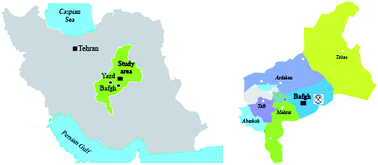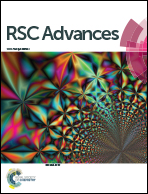Assessment of iron ore mineral wastes for sulfate removal from groundwater wells: a case study
Abstract
To reduce environmental risks of mining activities, it is important to find eco-friendly and efficient ways of using mine waste. One way to utilize mine waste is to reuse it as an adsorbent in environmental decontamination. This study describes the efficiency of Choghart iron ore mineral wastes (namely quartz-albitophire and metasomatite) as efficient adsorbents of sulfate in contaminated groundwater from wells of the Bafq district in the center of Iran. At first, iron ore mineral wastes were characterized using XRD, XRF, and FTIR spectroscopy and petrographic observations of thin sections. The main parameters such as pH, contact time, initial sulfate concentration and amount of adsorbent have been optimized for maximum sulfate removal, using response surface methodology (RSM) based on the central composite design (CCD) method. Based on RMS analysis, the sulfate removal models proved to be in good agreement with the experimental values, with very low probability values (<0.0001). From the predicted model, maximum sulfate adsorption onto metasomatite and quartz-albitophire was 31.07 and 20.27 mg g−1, respectively. This adsorption rate indicates that the seemingly worthless iron ore mineral waste can be useful to eliminate one of the most hazardous environmental pollutants. To identify the mechanism of adsorption, the equilibrium of the adsorption process was examined using non-linear isotherm models (Langmuir, Freundlich, Temkin, Dubinin–Radushkevich, Redlich–Peterson, Toth and Koble–Corrigan). These studies uncovered that sulfate adsorption onto quartz-albitophire has a complex character, and it seems that a combination of heterogeneous and homogenous adsorption occurs on the surface. The heterogeneous sulfate adsorption onto metasomatite has been confirmed by the Toth and Koble–Corrigan models. According to optimum conditions of sulfate adsorption, the maximum removed amounts of sulfate from Bafq groundwater wells using quartz-albitophire and metasomatite were 15.62 and 29.33 mg g−1, respectively.


 Please wait while we load your content...
Please wait while we load your content...